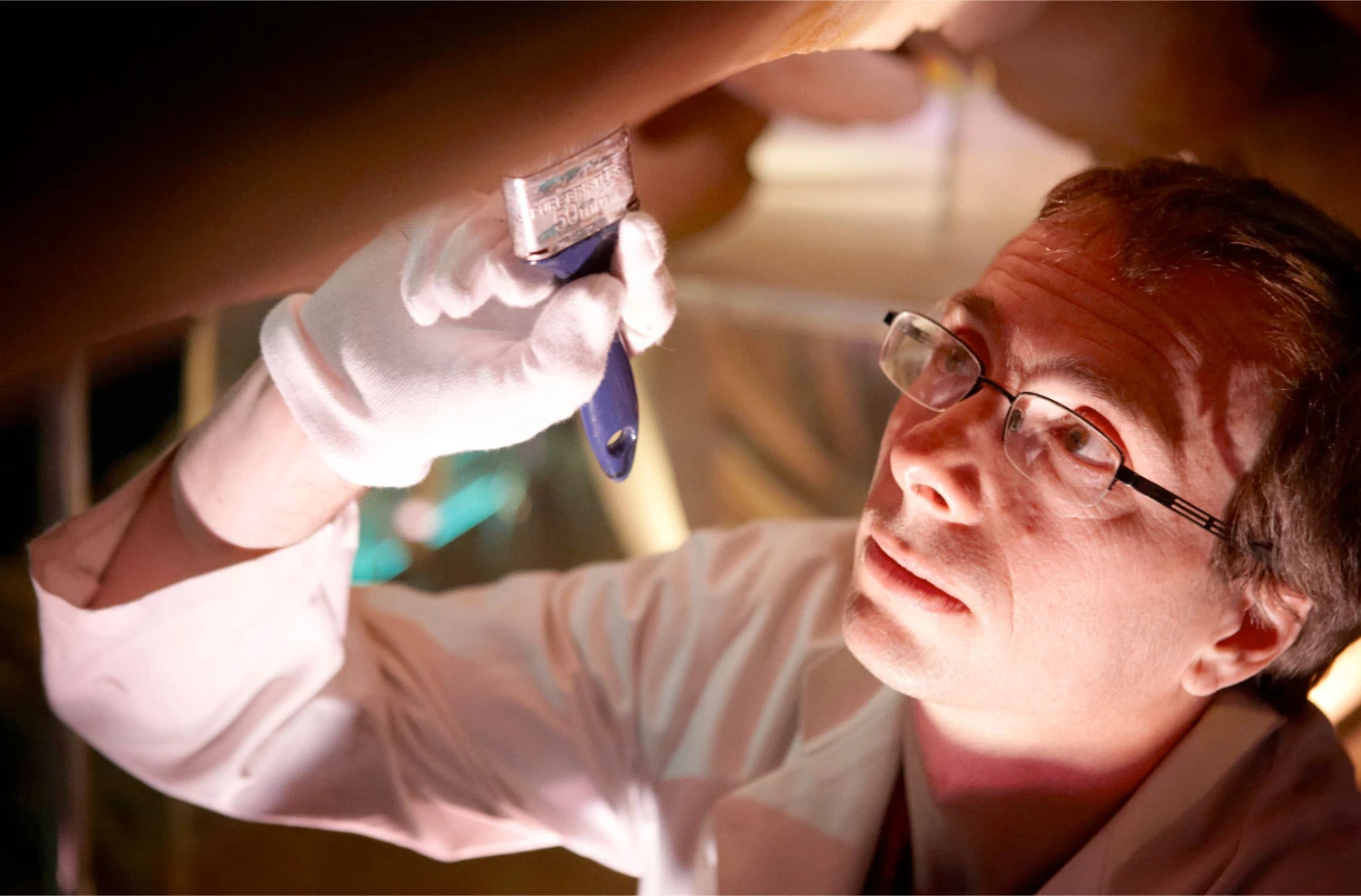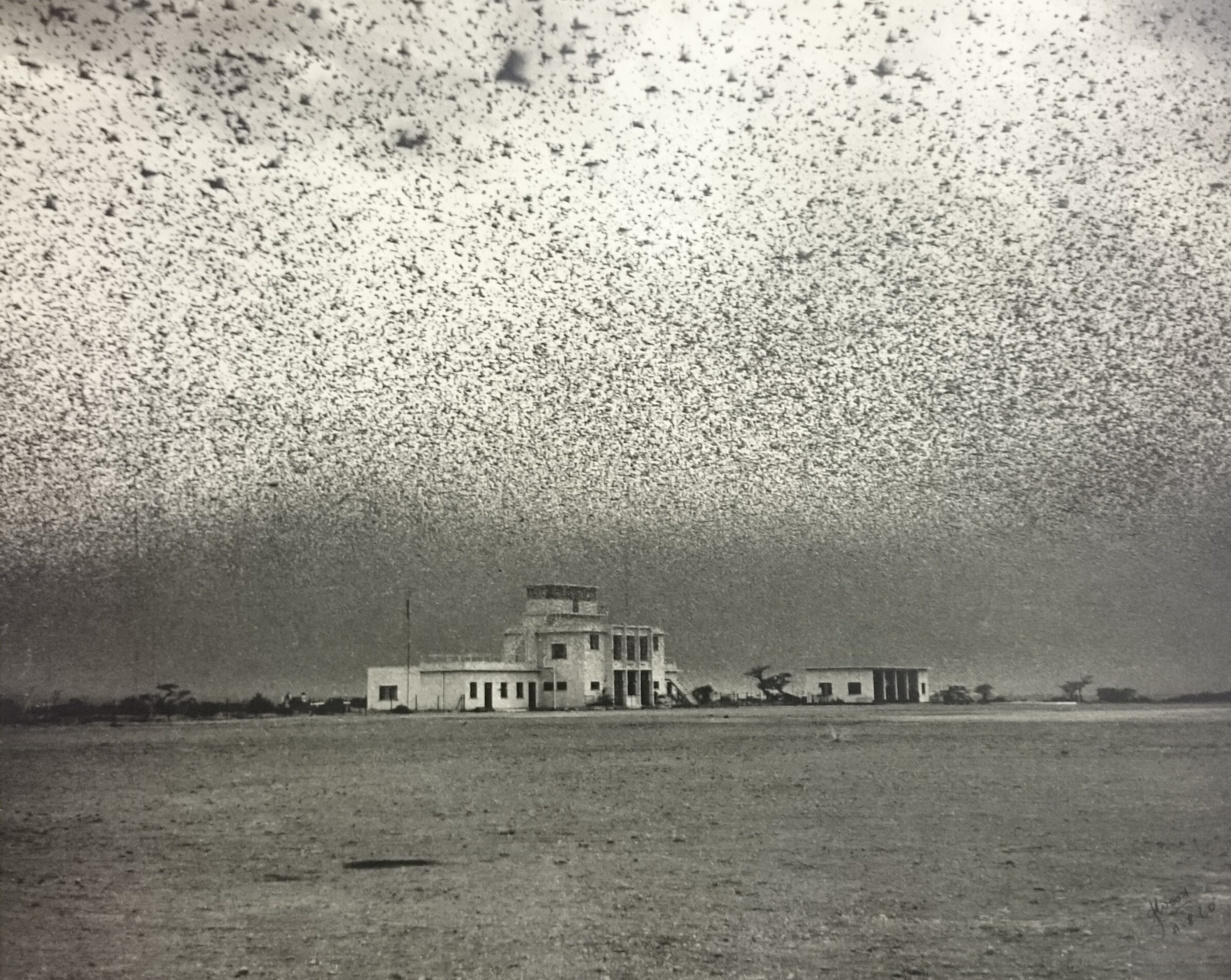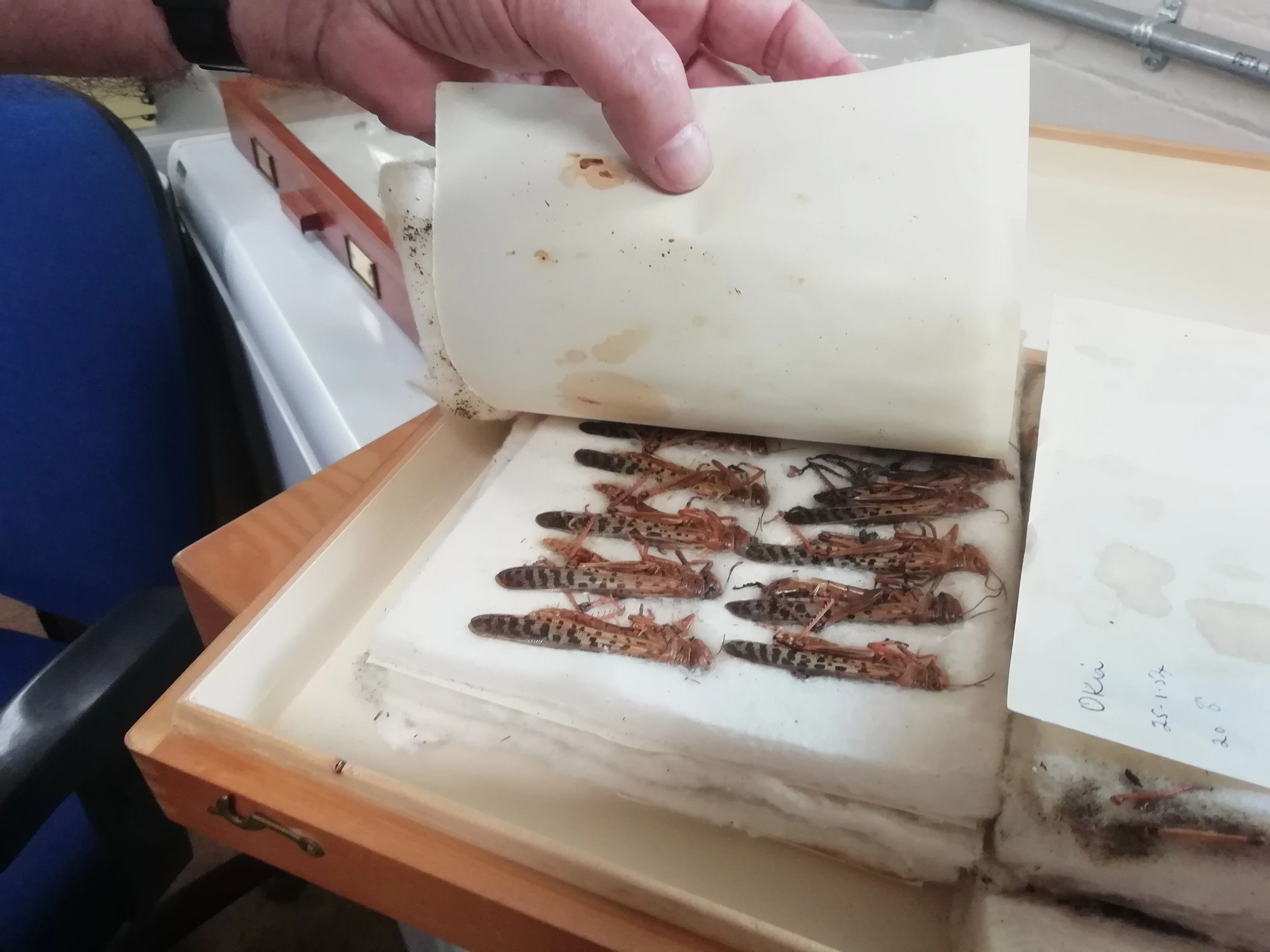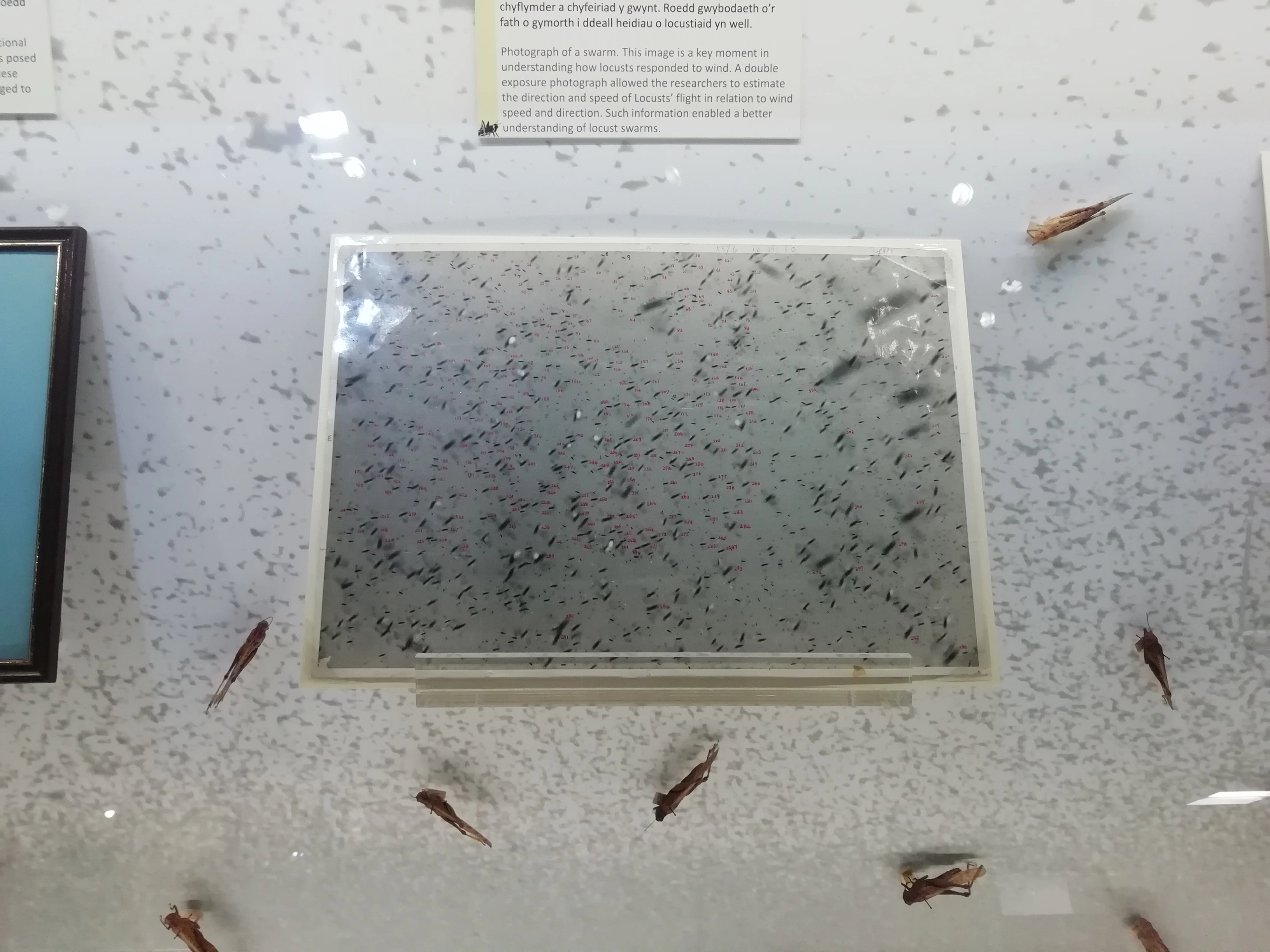'Locust War' - A new display in our InSight Gallery
, 26 April 2019
Locust swarms have for centuries destroyed crops and threatened food supplies across large parts of Africa, the Middle East, and Asia. This threat continues today - a recent plague in Madagascar destroyed 2.3 million hectares of crops. Controlling it took three years and cost $37 million.
Desert Locust (Schistocerca gregaria) swarms can move hundreds of miles within a vast ‘invasion area’ that can span dozens of countries, and even continents. To better understand and control such plagues of locusts the British founded the Anti-Locust Research Centre (ALRC) in the 1920s.
The ALRC took the lead in monitoring, studying, forecasting and controlling locust swarms. To do this they had to work with different experts including entomologists (insect specialists), cartographers (map makers), toxicologists (experts on poison), explorers, photographers, the military and local people.
For decades the ALRC gathered information on locusts worldwide. This now forms an incredible archive of thousands of documents, maps and photographs held at the Natural History Museum in London, and a collection of over 70,000 locust specimens that are now part of the collections here at Amgueddfa Cymru.
Our new display ‘Locust War’ reunites the archive and specimens to rediscover the remarkable work of the ALRC and the challenges it faced to understand and control the desert locust.
The exhibition is the work of a collaborative research project led by academics from the University of Warwick, University of Portsmouth and Glasgow School of Art, and supported by the Arts and Humanities Research Council.
‘Locust War’ is part of the displays in our InSight Gallery, and runs until the 16th September 2019.







